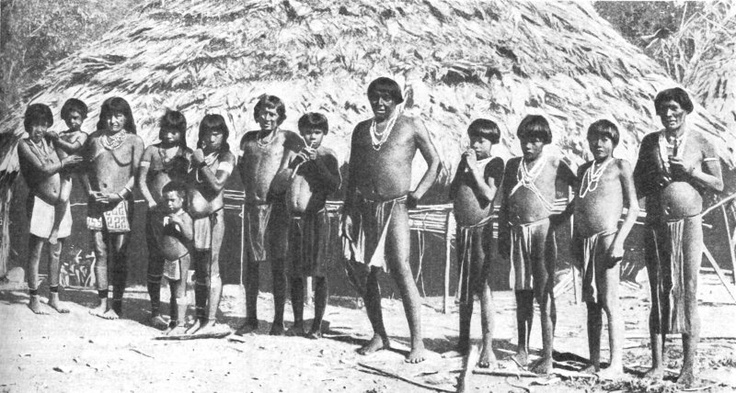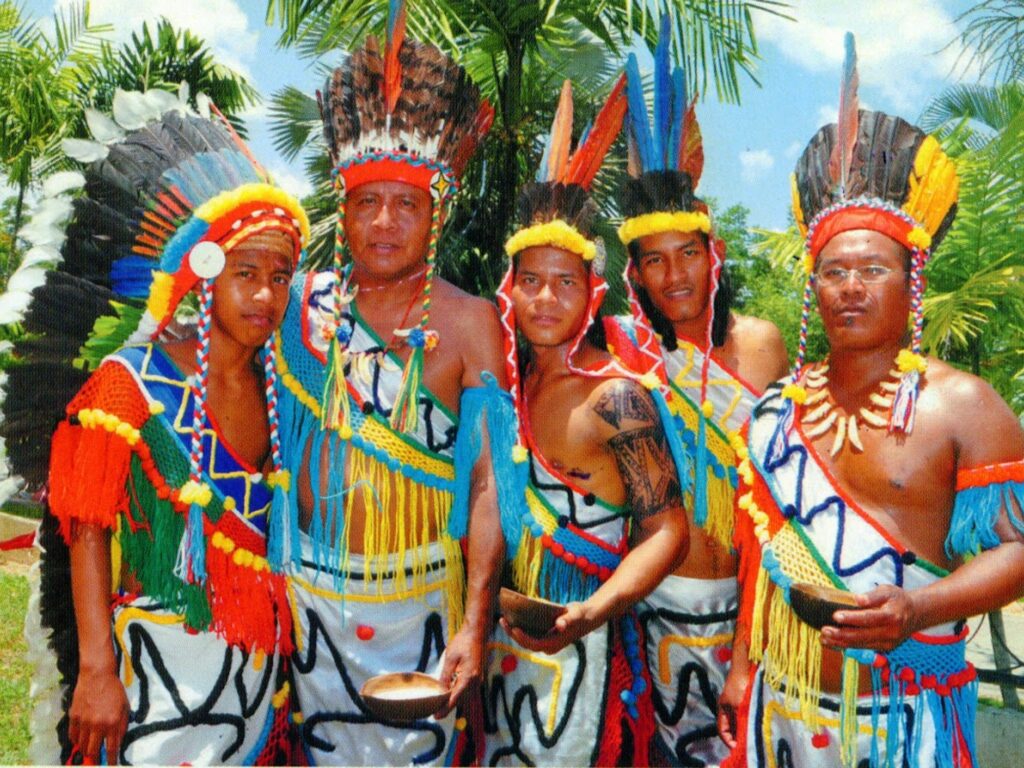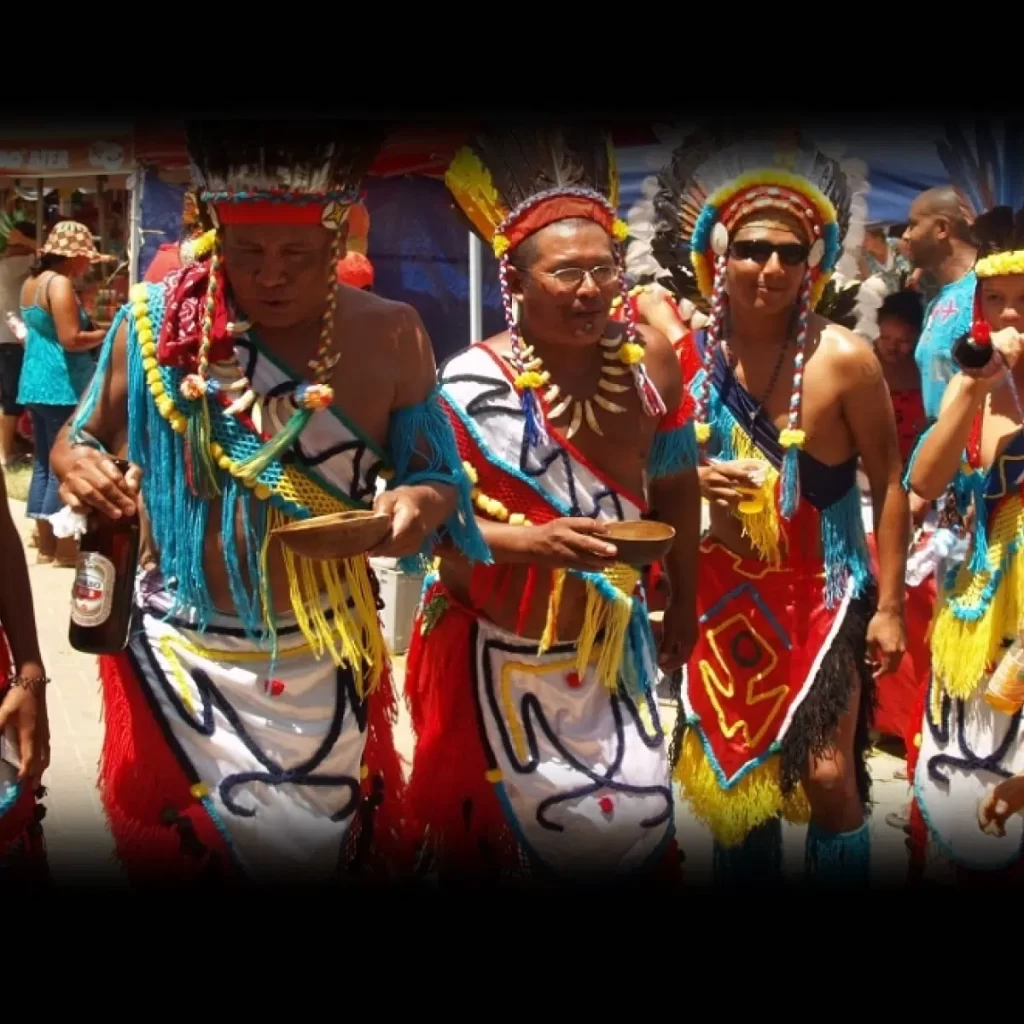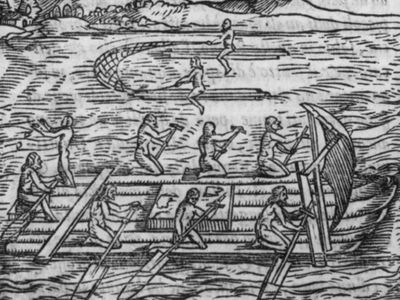Have you ever wondered about the indigenous peoples of Suriname? Who were they and what was their way of life? Well, in this article, we’re going to delve into the history and culture of the Arowaks and Caribs, the two prominent indigenous groups in Suriname. So, buckle up and get ready to travel back in time as we explore the fascinating world of these indigenous peoples.
Suriname, a small South American country, is home to a rich and diverse cultural heritage. At the heart of this heritage are the indigenous peoples who have lived in the region for thousands of years. The Arowaks and Caribs were two significant groups that inhabited Suriname long before the arrival of European colonizers. The Arowaks were primarily hunter-gatherers, living off the land and practicing agriculture. They resided near rivers and swamps, utilizing the rich resources of the rainforest. On the other hand, the Caribs were expert fishermen and skilled in cultivating various crops such as tobacco and cassava. Their villages were strategically located along the coast, allowing them easy access to both the sea and the forest. In the following paragraphs, we will dig deeper into their cultures, traditions, and the challenges they face in modern-day Suriname. So, keep reading to learn more about the fascinating world of the Arowaks and Caribs.

Introduction to the Arowaks and Caribs
The Arowaks and Caribs are two indigenous peoples who have inhabited the region of Suriname, a small country located on the northeastern coast of South America. These peoples have a rich history and culture, and their presence in Suriname predates the arrival of European colonizers. In this article, we will explore the historical background, cultural traditions, language and communication, religious beliefs and practices, arts and crafts, interactions with European colonizers, modern challenges, indigenous rights and advocacy, economy and subsistence, education and health, environmental stewardship and conservation, cultural exchange and tourism, representation in media and education, and the future prospects and challenges faced by the Arowaks and Caribs.
Historical background of the Arowaks and Caribs
The Arowaks and Caribs have a long and complex history in Suriname. The Arowaks are believed to be the original inhabitants of the region, with archaeological evidence suggesting their presence dating back over 5,000 years. They were a peaceful people who lived in small villages along the rivers and coastlines of Suriname. On the other hand, the Caribs were a more warlike people who migrated to the region in the 16th century, displacing the Arowaks from some areas.
Geographical distribution of the Arowaks and Caribs
The Arowaks and Caribs were traditionally concentrated in different regions of Suriname. The Arowaks primarily inhabited the coastal areas and the riverbanks, while the Caribs were more prevalent in the interior rainforests. Today, however, due to migrations and intermarriage, there is significant overlap in their geographic distribution, with many Arowaks and Caribs living in both coastal and interior regions.
Arowak cultural traditions
The Arowaks have a rich cultural heritage that is deeply intertwined with the natural environment. They have a strong connection to the rivers, forests, and mountains, which they view as sacred. The Arowak people have a deep respect for nature and practice sustainable farming, fishing, and hunting techniques. They have a strong oral tradition, with storytelling and music playing important roles in their cultural expression.
Carib cultural traditions
The Caribs also have a unique cultural identity and traditions. They are known for their craftsmanship, particularly in the area of woodcarving. The Caribs carve intricate designs and patterns into wood, creating beautiful and functional objects. They also have a strong musical tradition, with drumming and singing being integral to their cultural practices. The Caribs have a warrior tradition and place great importance on physical strength and bravery.
Social structure and family life of the Arowaks and Caribs
The social structure of the Arowaks and Caribs is centered around the family unit. Both societies are matrilineal, with descent and inheritance traced through the female line. Extended families typically live together in communal houses, sharing resources and supporting one another. Respect for elders is highly valued in both cultures, and decision-making is often done through consensus.

Traditional food and cuisine of the Arowaks and Caribs
The Arowaks and Caribs have distinct culinary traditions, influenced by the natural resources available to them in their respective regions. The Arowaks have a diet that is based on fish, cassava, fruits, and vegetables. They have developed unique methods of processing cassava, a staple crop, into various forms, including cassava bread and cassava beer. The Caribs, on the other hand, rely heavily on hunting and gathering in the rainforest, with game meat, wild fruits, and tubers forming the basis of their diet.
Arowak language and dialects
The Arowak people have their own language, known as Arawak or Lokono. It is a member of the Arawakan language family, which is spoken by various indigenous peoples throughout South America. While the Arawak language is still spoken by some elders in the community, it has unfortunately been in decline over the years. Efforts are being made to preserve and revitalize the language, through the establishment of language schools and the inclusion of Arawak language classes in the education system.
Carib language and dialects
The Caribs also have their own language, called Karina or Carib. It is a member of the Cariban language family, which is spoken by indigenous peoples in parts of Venezuela, Brazil, and Guyana, in addition to Suriname. Like the Arawak language, Carib has experienced a decline in recent years. However, there are ongoing efforts to preserve and promote the language, with Carib language classes being offered in some communities.
Oral traditions and storytelling
Storytelling is an important aspect of both Arowak and Carib cultures. It serves as a way to pass down knowledge, history, and cultural values from one generation to the next. Elders in the community are the keepers of these stories, and they play a crucial role in preserving the oral traditions of the Arowaks and Caribs. These stories often revolve around nature, the spirits, and the origins of the people, providing a link between the past and the present.
Spiritual beliefs of the Arowaks and Caribs
The Arowaks and Caribs have unique spiritual beliefs that are deeply rooted in their connection to the natural world. The Arowaks believe in the existence of various spirits, including ancestral spirits, nature spirits, and spirits associated with specific locations. They have rituals and ceremonies to honor these spirits and seek their guidance and protection. The Caribs also have a spiritual belief system that revolves around the concept of harmony with nature. They believe in the existence of powerful spirits and engage in ceremonies to maintain a balanced relationship with them.
Rituals and ceremonies
Both the Arowaks and Caribs have a rich tradition of rituals and ceremonies that are performed for various purposes. These include initiation ceremonies, fertility rituals, harvest ceremonies, and healing ceremonies. The rituals and ceremonies often involve music, dance, and the use of sacred objects. They are seen as a way to connect with the spiritual realm and ensure the well-being of the community.

Shamanism and spiritual healers
Shamanism is an important aspect of the spiritual practices of both the Arowaks and Caribs. Shamans are individuals who have a special connection with the spiritual world and possess knowledge and skills in healing and divination. They play a crucial role in the community, serving as mediators between the human and spirit realms. Shamanic practices include the use of sacred plants, such as ayahuasca, as well as rituals and chants to induce altered states of consciousness and facilitate healing.
Traditional arts and crafts of the Arowaks and Caribs
Both the Arowaks and Caribs have a long tradition of artistic expression, particularly in the areas of woodcarving and pottery. The Arowaks are known for their skill in making intricate and ornate wooden sculptures, masks, and household items. They also create pottery using traditional methods, with designs that reflect their cultural and natural surroundings. The Caribs, on the other hand, are renowned for their woodcarving expertise. They create finely detailed and elaborate carvings, often incorporating symbols and motifs that are significant to their culture.
Woodcarving and pottery
Woodcarving and pottery are important forms of artistic expression for the Arowaks and Caribs. Wooden sculptures and masks are created using various tools and techniques, with the finished pieces often showcasing the intricate designs and patterns that are characteristic of their respective cultures. Pottery-making involves the use of locally sourced clay and traditional methods of shaping and firing, resulting in unique and visually appealing vessels.
Textiles and woven items
Textile and woven items are also part of the artistic tradition of the Arowaks and Caribs. The Arowaks are skilled at weaving baskets and mats from fibers extracted from plant materials. These items serve both practical purposes, such as storage and transportation, as well as decorative ones. The Caribs, on the other hand, are known for their use of natural fibers, such as palm leaves, to create intricate and durable hammocks, which are highly valued for their comfort and craftsmanship.
Arrival of Christopher Columbus
The arrival of Christopher Columbus in the Caribbean in 1492 marked the beginning of European colonization in the region. Although Columbus himself did not land in what is now Suriname, his expeditions paved the way for subsequent European explorers and colonizers. The arrival of the Europeans had a profound impact on the Arowaks and Caribs, as well as other indigenous peoples in the Caribbean, leading to cultural assimilation, displacement, and loss of land.
Effects of European colonization on the Arowaks and Caribs
European colonization had devastating consequences for the Arowaks and Caribs. The indigenous populations were subjected to forced labor, disease, violence, and enslavement under the colonial regimes. Many Arowaks and Caribs were displaced from their ancestral lands and forced to relocate to missions or settlements established by the colonizers. This led to a decline in traditional practices, loss of cultural heritage, and disruption of social structures.

Resistance and conflicts
Despite the challenges they faced, the Arowaks and Caribs were not passive victims of colonization. They actively resisted the encroachment of European powers, often engaging in armed conflicts and uprisings. The Arawaks, in particular, staged several rebellions against the Dutch colonizers, fighting to protect their rights and land. These acts of resistance serve as a testament to the resilience and determination of the Arowaks and Caribs in the face of adversity.
Migrations of the Arowaks and Caribs
In addition to the forced migrations caused by European colonization, the Arowaks and Caribs have also experienced voluntary migrations. Factors such as changing environmental conditions, economic opportunities, and political instability have prompted some communities to move to different regions within Suriname or even to neighboring countries. These migrations have had both positive and negative impacts on the Arowaks and Caribs, as they adapt to new environments while also facing challenges such as loss of land and cultural identity.
Current challenges faced by indigenous communities in Suriname
Indigenous communities in Suriname, including the Arowaks and Caribs, continue to face numerous challenges in the modern era. One of the most pressing issues is the encroachment of industrial activities on their ancestral lands, such as mining, logging, and agriculture. This not only threatens the livelihoods of the indigenous peoples who rely on the land for subsistence, but also contributes to deforestation, pollution, and loss of biodiversity. Limited access to basic services such as education and healthcare, as well as discrimination and marginalization, are also among the challenges faced by indigenous communities in Suriname.
Efforts towards cultural preservation and revitalization
In the face of these challenges, indigenous communities in Suriname, including the Arowaks and Caribs, have taken proactive measures to preserve and revitalize their cultures and traditions. They have established cultural centers, language schools, and museums to promote indigenous knowledge and heritage. They actively participate in cultural festivals and events, both within their own communities and in collaboration with other indigenous groups. Indigenous leaders and organizations are also advocating for the recognition of indigenous rights, land rights, and increased representation in decision-making processes.
Recognition of indigenous rights
In recent years, there has been increased recognition of the rights of indigenous peoples in Suriname. The Surinamese government, as well as international organizations and human rights bodies, have acknowledged the importance of protecting and promoting the rights and well-being of indigenous communities. Efforts are being made to ensure the participation of indigenous peoples in decision-making processes that affect their lives and territories, and to address issues such as land rights, cultural preservation, and access to basic services.
Role of indigenous organizations and leaders in Suriname
Indigenous organizations and leaders play a crucial role in advocating for the rights and interests of the Arowaks and Caribs, as well as other indigenous communities in Suriname. These organizations serve as platforms for indigenous peoples to come together, share experiences, and work towards common goals. Indigenous leaders are often at the forefront of efforts to protect indigenous lands, preserve cultural traditions, and promote sustainable development. Their leadership and resilience have been instrumental in bringing about positive change for indigenous communities.

International indigenous movements and advocacy
The Arowaks and Caribs are part of a broader international indigenous movement, which seeks to ensure the recognition and respect of indigenous rights and the preservation of indigenous cultures and traditions. Indigenous peoples from across the globe have come together to form alliances and networks, advocating for issues such as land rights, self-determination, and the right to cultural identity. The United Nations Declaration on the Rights of Indigenous Peoples, adopted in 2007, is a significant milestone in the global recognition of indigenous rights and has provided a framework for indigenous advocacy at the international level.
Traditional economic activities
The traditional economic activities of the Arowaks and Caribs are closely tied to their natural environment. Historically, both groups relied on subsistence farming, fishing, and hunting for their livelihoods. They practiced sustainable farming methods, such as shifting cultivation, which allowed the land to regenerate and ensure long-term food security. Fishing, particularly in rivers and coastal areas, was also an important economic activity, providing a source of protein and income. These traditional economic practices have been impacted by modernization and the encroachment of industrial activities.
Impact of modernization on indigenous livelihoods
The modernization of Suriname, coupled with the expansion of industrial activities, has had a significant impact on the livelihoods of the Arowaks and Caribs. The encroachment of mining, logging, and agriculture on their ancestral lands has resulted in the loss of traditional farming and hunting grounds, as well as pollution and environmental degradation. This has forced many indigenous communities to seek alternative livelihoods, such as wage labor in urban areas or engagement in cash crop cultivation. The shift away from traditional economic activities has had implications for cultural identity and social cohesion.
Sustainable development and ecotourism
In recent years, there has been a growing recognition of the importance of sustainable development and ecotourism as a means of promoting indigenous livelihoods and preserving natural and cultural heritage. Indigenous communities in Suriname, including the Arowaks and Caribs, have been actively engaged in initiatives aimed at sustainable agriculture, community-based tourism, and the protection of eco-sensitive areas. These initiatives not only provide economic opportunities for the indigenous communities, but also contribute to the preservation of their cultural traditions and the conservation of the natural environment.
Access to education for indigenous children
Access to quality education is a key challenge faced by indigenous children in Suriname. Many remote indigenous communities lack schools and face difficulties in recruiting and retaining qualified teachers. The language barrier presents an added challenge, as the official language of education in Suriname is Dutch, while many indigenous children have Arawak or Carib as their first language. Efforts are being made to address these challenges through the establishment of bilingual and intercultural education programs, in collaboration with indigenous communities and organizations.
Challenges in healthcare provision
Indigenous communities in Suriname, including the Arowaks and Caribs, also face challenges in accessing adequate healthcare services. Many remote communities are located far from healthcare facilities, making it difficult for residents to access essential medical care. Language barriers and cultural differences also contribute to a lack of understanding and trust between healthcare providers and indigenous patients. Efforts are being made to address these challenges through the establishment of community health workers, the provision of culturally sensitive healthcare services, and the integration of traditional medicine and healing practices into the healthcare system.
Traditional medicine and healing practices
Traditional medicine and healing practices play an important role in the healthcare system of the Arowaks and Caribs. These practices are often based on a deep understanding of the medicinal properties of plants and other natural resources. Traditional healers, known as bush doctors or shamans, use plant-based remedies, rituals, and spiritual practices to treat various ailments and restore balance within the individual and the community. The integration of traditional medicine into the mainstream healthcare system has the potential to improve health outcomes for indigenous communities while also preserving cultural heritage.
Relationship with the natural environment
The Arowaks and Caribs have a deep spiritual and cultural connection with the natural environment. They view the land, rivers, mountains, and forests as sacred and have a strong sense of responsibility to protect and care for these resources. Traditional ecological knowledge, passed down through generations, forms the basis of their sustainable land management practices. The indigenous communities in Suriname are actively engaged in initiatives and collaborations aimed at the conservation and sustainable use of natural resources, bringing together traditional knowledge and modern conservation practices.
Conservation initiatives and indigenous land rights
The Arowaks and Caribs have been at the forefront of conservation initiatives in Suriname. They have played a crucial role in advocating for the recognition of indigenous land rights and the establishment of protected areas. Indigenous territories in Suriname, known as collectieve gronden, have legal recognition and provide a measure of protection for both the indigenous communities and the biodiversity-rich ecosystems they inhabit. These initiatives serve as examples of the importance of indigenous land stewardship in conserving the natural environment for future generations.
Cultural tourism and indigenous tourism initiatives
Cultural tourism and indigenous tourism initiatives have become increasingly popular in Suriname. These initiatives provide opportunities for tourists to experience and learn about the traditions, customs, and way of life of the Arowaks and Caribs. Indigenous communities have established homestays, cultural centers, and guided tours, providing visitors with an authentic and immersive experience. These initiatives not only generate income for the indigenous communities but also contribute to the preservation and revitalization of their cultural heritage.
Promoting cultural exchange and understanding
Cultural exchange and understanding are important components of promoting respect and appreciation for the Arowaks and Caribs. Indigenous communities in Suriname actively engage in cultural exchange programs, hosting visitors from other communities and countries. These programs provide an opportunity for cultural sharing, learning, and fostering mutual respect and understanding. They contribute to the preservation of indigenous cultures and traditions while also challenging stereotypes and promoting intercultural dialogue.
Preserving indigenous heritage and traditions
The preservation of indigenous heritage and traditions is crucial for maintaining the cultural identity of the Arowaks and Caribs. Efforts are being made to document and safeguard traditional knowledge, rituals, and practices through the establishment of cultural centers, museums, and archives. Indigenous communities are also engaged in efforts to revitalize and transmit cultural traditions to younger generations, through the teaching of traditional arts and crafts, language classes, and cultural festivals. The preservation of indigenous heritage serves not only as a source of pride for the communities but also as a valuable contribution to the cultural diversity of Suriname.
Media portrayal of indigenous peoples in Suriname
The media portrayal of indigenous peoples in Suriname has often been limited and stereotypical. Indigenous communities are often depicted in a romanticized or exoticized manner, reducing their rich cultural heritage to superficial stereotypes. There is a lack of representation and inclusion of indigenous voices and perspectives in mainstream media, limiting the understanding and appreciation of their contributions and struggles. Efforts are needed to challenge these stereotypes, promote accurate and respectful portrayals, and increase indigenous representation in media storytelling and production.
Inclusion of indigenous history and knowledge in education
The inclusion of indigenous history and knowledge in the education system is crucial for promoting understanding and respect for the Arowaks and Caribs. Indigenous communities have been advocating for the integration of indigenous perspectives, history, and cultural practices into the curriculum at all levels of education. This includes the recognition of indigenous languages, the teaching of indigenous history, and the incorporation of traditional ecological knowledge into science and environmental education. Inclusive and culturally relevant education plays a vital role in challenging stereotypes and fostering intercultural understanding.
Challenges in accurate representation and decolonization
Accurate representation and decolonization are ongoing challenges in the context of indigenous rights and cultural preservation. The Arowaks and Caribs, like many indigenous communities, continue to face discrimination, marginalization, and the legacy of colonialism. Efforts to address these challenges require systemic changes and a shift in societal attitudes towards indigenous peoples. This includes acknowledging the historical injustices inflicted upon indigenous communities, promoting self-determination, and ensuring their representation and participation in decision-making processes that affect their lives and lands.
Conclusion
The Arowaks and Caribs, as the indigenous peoples of Suriname, have a rich history, vibrant culture, and close relationship with the natural environment. Their contributions to the cultural diversity and heritage of Suriname are invaluable. However, they also face numerous challenges, including the encroachment of industrial activities, limited access to education and healthcare, and the need for the recognition of indigenous rights. Efforts are being made to address these challenges and promote the preservation of indigenous cultures and traditions. By recognizing the significance of the Arowaks and Caribs, respecting their rights, and supporting their efforts towards self-determination and cultural revitalization, we can ensure a more inclusive and sustainable future for all in Suriname.